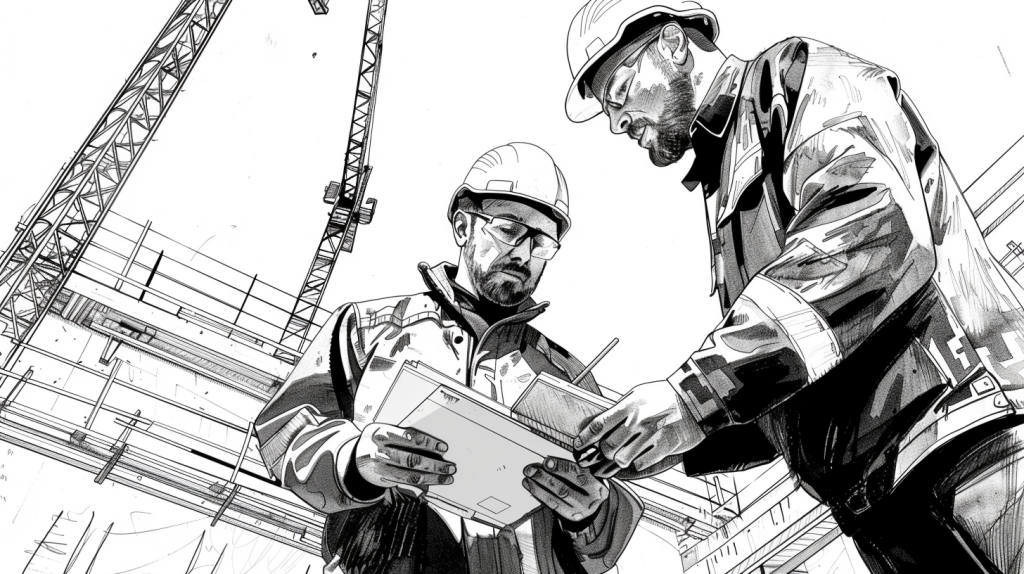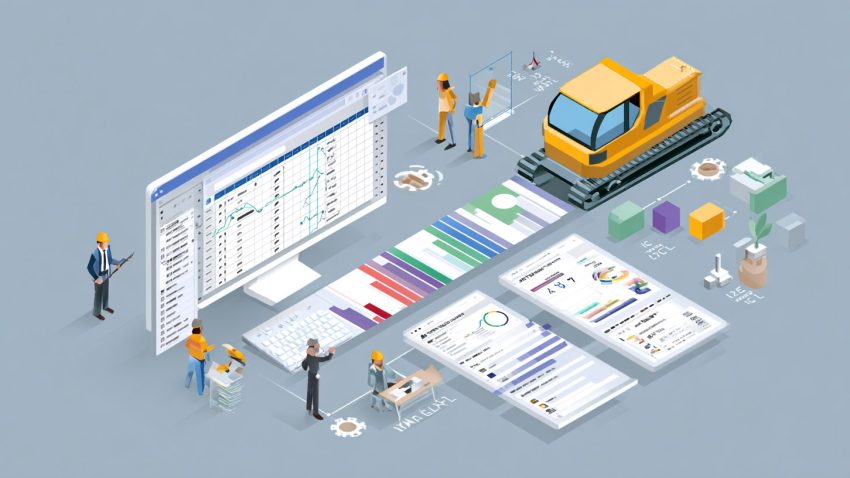Data Center Construction Delivery Coordination: Efficient Scheduling Strategies for Modular Data Center Equipment Installations
Table of Contents:

When it comes to data center construction, managing the delivery and installation of modular equipment is a logistical challenge that requires precision, timing, and seamless coordination. Unlike traditional construction projects, where materials arrive in bulk and are assembled on-site, modular data center components—such as prefabricated power units, cooling systems, and IT infrastructure—must be scheduled for delivery and installation with pinpoint accuracy.
If deliveries arrive too early, storage issues and handling risks increase. If they arrive too late, installation schedules get thrown off, causing costly delays. That’s why efficient scheduling strategies are crucial for ensuring modular data center components arrive at the right time, in the right order, and in the right condition.
This guide will explore the best practices for coordinating deliveries and scheduling modular data center equipment installations, helping construction managers, logistics teams, and contractors keep projects on time, on budget, and free from unnecessary disruptions.
Why Modular Data Center Equipment Requires Precise Delivery Coordination
Unlike traditional construction, where materials arrive in stages and get built from the ground up, modular data center components are pre assembled and shipped to the site as near-complete units. This means that delivery schedules must be precisely coordinated with installation teams, or risk delays, material handling issues, and increased costs.
For example, if modular power units arrive before the foundation and electrical conduit are ready, they’ll need temporary storage, which may not be available. Conversely, if cooling modules arrive too late, IT equipment installation could be delayed, impacting the overall commissioning timeline.
The key to success lies in real-time tracking, phased delivery scheduling, and aligning workforce shifts with modular component arrivals. By using platforms like StruxHub Deliveries, construction teams can track shipments in real-time, adjust schedules dynamically, and ensure every module arrives exactly when needed.
Key Benefits
- Reduces On-Site Storage Requirements: Limits congestion and handling risks.
- Prevents Installation Delays: Ensures components arrive when needed.
- Improves Logistics Efficiency: Minimizes labor and transport costs.
Best Practices
- Use Just-in-Time Delivery Strategies – Schedule modules to arrive as they are needed.
- Coordinate with Logistics Teams – Ensure transport and site readiness align.
- Implement Digital Tracking Systems – Use StruxHub for real-time visibility.
With precise delivery coordination, modular data center equipment can be installed seamlessly, reducing costs and avoiding unnecessary storage or handling risks.

Creating Phased Delivery Plans for Modular Installations
One of the most effective ways to prevent bottlenecks and inefficiencies in modular data center construction is by implementing phased delivery plans. Instead of having all equipment arrive at once, modular components should be scheduled in stages based on installation priority and site readiness.
For example, modular power infrastructure (such as generators and battery storage systems) should arrive before IT racks and cooling units, ensuring that power distribution is fully functional before IT teams begin installation. Similarly, prefabricated HVAC modules should be delivered just before server racks to avoid having sensitive equipment sit in unregulated temperatures.
Key Benefits
- Optimizes Workflow Efficiency: Ensures each stage of construction progresses smoothly.
- Prevents Storage Issues: Reduces the need for excess on-site space.
- Improves Labor Coordination: Aligns workforce schedules with equipment arrivals.
Best Practices
- Develop a Phased Logistics Plan – Coordinate deliveries with construction milestones.
- Use RFID and Barcode Tracking – Digitally track equipment location and status.
- Integrate Workforce & Delivery Scheduling – Ensure that installation teams are ready when components arrive.
A phased approach to modular data center equipment delivery prevents workflow disruptions and ensures that installation teams have exactly what they need, exactly when they need it.
Related Articles:
Managing Just-in-Time (JIT) Deliveries for Modular Data Centers
In modular data center construction, just-in-time (JIT) delivery is essential to keeping the supply chain efficient and reducing unnecessary storage risks. JIT ensures that materials arrive only when they are needed, reducing site congestion and improving labor productivity.
JIT deliveries require real-time tracking, proactive supplier coordination, and precise scheduling to avoid late shipments or gaps in installation progress. If a modular UPS system arrives a day late, it can cause a ripple effect, delaying electrical installations and pushing back IT commissioning.
By integrating real-time tracking software, such as StruxHub, project teams can monitor shipments in transit, adjust schedules dynamically, and ensure that modules arrive exactly when the site is ready for installation.
Key Benefits
- Eliminates Site Clutter: Reduces excess materials stored on-site.
- Enhances Installation Efficiency: Ensures labor is scheduled optimally.
- Improves Supplier Accountability: Tracks vendor performance and delivery accuracy.
Best Practices
- Use GPS and RFID Tracking – Monitor shipments in real time.
- Schedule Deliveries Based on Installation Phases – Avoid early or late arrivals.
- Implement Digital Proof-of-Delivery Systems – Ensure every shipment is documented.
By adopting just-in-time delivery strategies, data center construction teams can reduce delays, optimize storage, and ensure efficient installations.
Preventing Supply Chain Disruptions in Modular Data Center Equipment Deliveries
Supply chain disruptions are one of the biggest challenges in modular data center construction, especially when relying on specialized pre-assembled components. Any unexpected delay in shipments, material shortages, or vendor issues can lead to construction bottlenecks, workforce downtime, and costly project overruns.
Unlike traditional builds, where materials are sourced locally and in smaller batches, modular data centers often depend on global supply chains. A delayed shipment of modular UPS systems from an overseas supplier can hold up electrical installations, while missing cooling infrastructure can delay server deployment.
To prevent supply chain disruptions, project managers should implement predictive analytics and real-time logistics tracking. By monitoring vendor performance, weather conditions, and geopolitical risks, teams can anticipate potential delays and secure backup suppliers when necessary.
Key Benefits
- Reduces Construction Delays: Ensures materials arrive on schedule.
- Improves Vendor Accountability: Tracks supplier performance over time.
- Enhances Risk Management: Identifies supply chain vulnerabilities before they cause problems.
Best Practices
- Use AI-Based Predictive Analytics – Forecast delivery delays and adjust schedules proactively.
- Diversify Supplier Networks – Reduce dependency on a single vendor.
- Implement Real-Time Tracking Tools – Use StruxHub for supply chain visibility.
By anticipating potential supply chain disruptions and taking proactive steps to mitigate risks, data center construction teams can avoid costly setbacks and ensure project continuity.

Optimizing Staging Areas for Efficient Modular Installations
Efficient staging areas are essential for ensuring that modular data center components are properly stored, organized, and ready for installation. Without dedicated staging zones, materials can be misplaced, damaged, or cause on-site congestion, slowing down project progress.
Since modular units are preassembled and shipped in large sections, they require careful handling and secure storage before being lifted into place. A lack of proper staging can result in cranes waiting for misplaced modules, work crews standing idle, or weather exposure damaging sensitive equipment.
By designating climate-controlled storage for temperature-sensitive components (like power distribution units and battery banks) and securing on-site staging zones for easy access, teams can streamline installation processes and prevent logistical headaches.
Key Benefits
- Reduces On-Site Congestion: Keeps work areas clear and organized.
- Protects High-Value Equipment: Prevents damage due to poor storage conditions.
- Improves Installation Efficiency: Ensures components are ready for deployment when needed.
Best Practices
- Set Up Predefined Staging Zones – Assign separate areas for different modular components.
- Use RFID and QR Code Tracking – Ensure quick and accurate material identification.
- Coordinate Staging with Delivery Schedules – Align workforce availability with module arrivals.
Proper staging area management ensures that modular data center installations proceed smoothly, efficiently, and without unnecessary material handling risks.
Related Articles:
Managing Workforce Availability for Modular Equipment Installations
The best delivery coordination strategies mean nothing if the right workforce isn’t available to install the components on time. Workforce scheduling must be aligned with modular deliveries, ensuring that skilled technicians are on-site when and where they’re needed.
If a modular cooling system arrives before HVAC specialists are scheduled, it sits unused, taking up space and delaying other installations. Conversely, if an electrical crew is scheduled but switchgear hasn’t arrived, you’re paying workers to stand around.
By integrating real-time workforce scheduling with delivery tracking systems, project managers can ensure that technicians and labor crews are assigned only when materials are on-site and installation-ready.
Key Benefits
- Eliminates Worker Downtime: Ensures labor resources aren’t wasted.
- Optimizes Labor Allocation: Matches skilled trades with project phases.
- Improves Construction Timelines: Keeps installations moving forward efficiently.
Best Practices
- Use AI-Driven Workforce Management Tools – Schedule crews based on real-time material availability.
- Align Shift Scheduling with Equipment Arrivals – Avoid unnecessary labor costs.
- Enable Mobile Workforce Alerts – Use StruxHub for instant scheduling updates.
By synchronizing workforce schedules with modular equipment deliveries, data center construction projects can maximize productivity and prevent costly delays.

Leveraging AI and Automation for Modular Data Center Delivery Optimization
AI-powered logistics and automated scheduling tools are revolutionizing modular data center delivery coordination, helping construction teams predict delays, optimize transportation routes, and improve project timelines.
Traditional scheduling relies on static plans that don’t adapt to unexpected changes, while AI-driven systems dynamically adjust delivery schedules based on real-time job site conditions, weather, and supply chain disruptions.
By integrating AI-based forecasting models, project managers can optimize delivery windows, automate workforce scheduling adjustments, and even recommend alternate suppliers when delays occur. Platforms like StruxHub leverage AI to track deliveries in real-time, detect bottlenecks, and improve supply chain efficiency.
Key Benefits
- Increases Scheduling Accuracy: AI adjusts delivery plans dynamically.
- Enhances Risk Mitigation: Forecasts and prevents supply chain disruptions.
- Improves Overall Project Efficiency: Automates repetitive logistics tasks.
Best Practices
- Use AI-Based Logistics Platforms – Optimize delivery timing and coordination.
- Automate Scheduling Adjustments – Ensure workforce availability aligns with changing project needs.
- Leverage Predictive Analytics – Identify high-risk delays before they occur.
With AI-powered automation and logistics tracking, modular data center projects can achieve unparalleled efficiency, reduce risks, and maintain seamless delivery schedules.

StruxHub
Experience the power of StruxHub today and witness firsthand how it can revolutionize your construction operations.
Unlock the Full Potential of Your Construction Projects with StruxHub
StruxHub enhances efficiency and coordination across all project phases, providing a single source of truth that eliminates silos and fosters collaboration. Real-time updates, financial management tools, and seamless commvunication features ensure that all team members and stakeholders are aligned and informed, reducing the risk of errors and delays. With comprehensive solutions for document management, risk mitigation, and quality control, StruxHub maintains project integrity and safety, while mobile access and integration capabilities further enhance project flexibility and efficiency.
StruxHub’s Key Features and Benefits:
- Advanced Delivery Management: Automate and optimize your delivery schedules, ensuring materials arrive just in time, every time.
- Site Communication: Utilize georeferenced maps and instant messaging to keep every team member informed and aligned.
- Construction Materials Management: Track inventory levels and manage materials procurement with ease, reducing waste and avoiding project delays.
- Construction Safety & Inspection Workflows: Implement customizable mobile forms for conducting safety inspections and managing compliance documentation effortlessly.
- Short-Term Scheduling: Visualize project tasks with detailed floor plans, linking each activity to specific locations for better planning accuracy.
- Construction Resource Management: Efficiently allocate personnel and equipment, maximizing productivity and reducing idle time.
StruxHub’s Product Offering:
- StruxHub Deliveries: Simplifies the coordination of incoming deliveries, ensuring materials and equipment are precisely timed to project needs.
- StruxHub Logistics: Offers intelligent site logistics planning, from crane scheduling to space allocation, for smoother operations.
- StruxHub Safety: Elevates on-site safety standards with easy-to-use tools for inspections, permits, and incident reporting.
- StruxHub Scheduling: Enhances project timelines with intuitive scheduling tools that ensure tasks are completed efficiently and on time.
With StruxHub, construction companies can look forward to a streamlined, more efficient project execution that delivers on time and within budget. Embrace the power of innovation and take your construction projects to the next level.
Don’t miss out on the opportunity to optimize your construction management processes with StruxHub. Sign up for a free demo today. Let’s build smarter, together.

StruxHub: Revolutionizing Project Management in Large Commercial Construction
FAQ
How does modular construction improve data center delivery efficiency?
Modular construction revolutionizes data center delivery efficiency by streamlining the build process, reducing on-site labor requirements, and improving overall project speed. Unlike traditional construction, where every component is assembled on-site, modular data centers arrive as pre-engineered units, reducing the need for complex, multi-phase installations.
By having key infrastructure components—like power modules, IT enclosures, and cooling units—preassembled in controlled environments, modular construction ensures higher quality, faster installation, and fewer logistical challenges. This approach eliminates the unpredictable nature of on-site fabrication, ensuring that each modular unit arrives fully tested and ready for integration.
Additionally, phased modular delivery schedules allow teams to install components in strategic sequences, ensuring that power, cooling, and IT infrastructure are implemented in the correct order. This approach also reduces job site congestion by limiting how much equipment is stored on-site at a given time.
Platforms like StruxHub Deliveries provide real-time tracking and scheduling capabilities, helping construction teams synchronize workforce availability with equipment arrivals.
By reducing construction timelines, improving material coordination, and ensuring quality control, modular construction helps data centers come online faster, more efficiently, and with fewer risks.
How can project managers optimize scheduling for modular equipment installations?
Optimizing scheduling for modular equipment installations is critical to ensuring smooth delivery coordination, minimal downtime, and efficient workforce utilization. Without a strategic scheduling plan, materials can arrive too early or too late, creating logistical bottlenecks and unnecessary storage issues.
To improve scheduling, project managers should implement Just-in-Time (JIT) delivery models, ensuring that modular components arrive only when they are ready to be installed. This prevents on-site congestion and reduces unnecessary material handling. By using AI-driven scheduling tools, project teams can also adjust labor assignments dynamically based on delivery status updates.
A phased scheduling approach ensures that different modular components are delivered in the correct order. For example, power distribution modules should be installed before IT enclosures, while cooling units should be in place before servers arrive. Platforms like StruxHub Scheduling enable project managers to align workforce schedules with modular deliveries, ensuring that installation teams are on-site at the right time.
Additionally, leveraging predictive analytics allows teams to anticipate delivery risks, potential delays, and workforce availability issues before they impact the project.
By integrating smart scheduling strategies, AI-driven logistics, and real-time workforce tracking, project managers can prevent downtime, keep construction moving, and ensure that modular data center installations stay on track and within budget.
How does modular construction improve data center delivery efficiency?
Modular construction streamlines the building process by preassembling key data center components off-site, reducing on-site labor demands and construction timelines. This approach minimizes installation errors, optimizes scheduling, and reduces supply chain delays.
Unlike traditional builds, where materials arrive in bulk and require on-site fabrication, modular data centers use pre-engineered units that are shipped, positioned, and connected with minimal labor effort. This significantly reduces installation time, improves quality control, and enhances energy efficiency.
Additionally, by leveraging phased delivery schedules, modular construction prevents overcrowding at job sites, ensuring that workers have the space and resources they need to complete tasks efficiently.
What challenges arise when scheduling deliveries for modular data centers?
The biggest challenges include supply chain disruptions, workforce coordination issues, and unpredictable site conditions. If a shipment of modular cooling units arrives before electrical infrastructure is in place, delays will occur. Similarly, if deliveries are misaligned with labor availability, installation teams may be forced to wait, leading to wasted hours and increased costs.
Using AI-powered scheduling and real-time delivery tracking, project managers can anticipate potential bottlenecks and adjust schedules before issues arise.
How can real-time tracking improve modular data center construction?
Real-time tracking ensures that every modular component arrives at the right time, preventing delays and optimizing workflow efficiency. By integrating RFID, GPS, and cloud-based logistics software, teams can monitor shipments in transit, receive instant updates, and dynamically adjust workforce schedules.
Platforms like StruxHub Deliveries provide live tracking, automated delivery confirmations, and proactive issue resolution, helping construction teams stay on schedule and avoid unnecessary delays.



